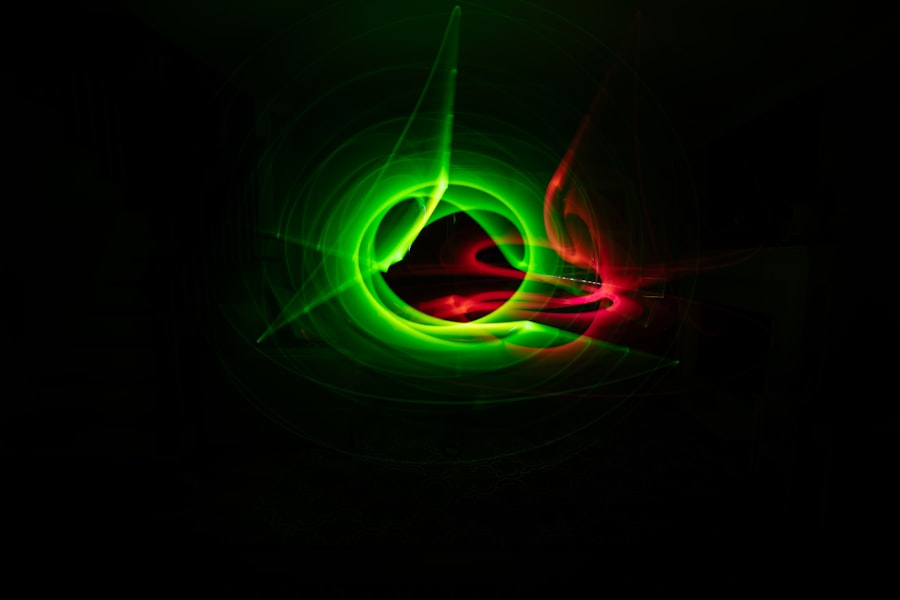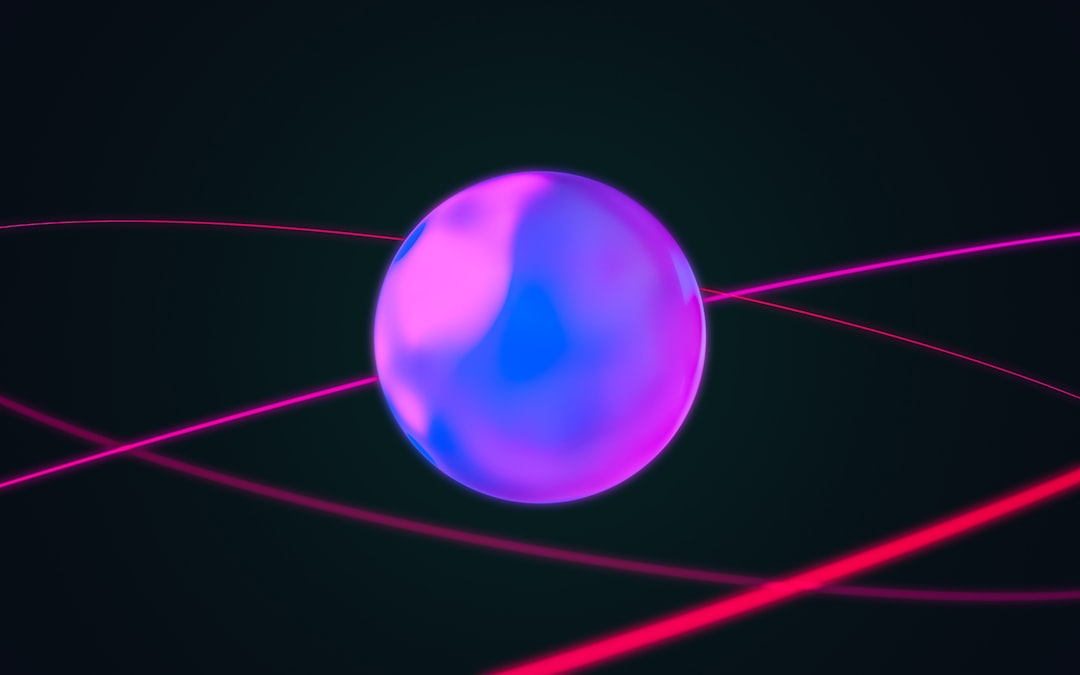Proton decay is a fascinating and enigmatic phenomenon that has intrigued physicists for decades. It represents a potential violation of one of the most fundamental principles in particle physics: the stability of protons. In the current understanding of particle physics, protons are considered stable particles, forming the building blocks of atomic nuclei.
However, certain theoretical frameworks suggest that protons may not be eternal and could eventually decay into lighter particles. This possibility raises profound questions about the nature of matter, the forces that govern the universe, and the ultimate fate of all baryonic matter. The concept of proton decay is not merely an abstract idea; it has significant implications for our understanding of the universe.
If protons can decay, it would challenge the very foundations of the Standard Model of particle physics, which has successfully described a wide range of phenomena. The search for evidence of proton decay is not just a quest for a rare event; it is a journey into the heart of fundamental physics, exploring the uncharted territories of Grand Unified Theories (GUTs) and the potential unification of the fundamental forces.
Key Takeaways
- Proton decay is a theoretical process in which protons, a fundamental building block of matter, are believed to decay over time.
- The Standard Model of particle physics does not predict proton decay, but many extensions of the model, such as Grand Unified Theories, do.
- Theoretical predictions for proton decay vary widely, with some models suggesting lifetimes on the order of 10^30 years.
- Experimental searches for proton decay have been ongoing for decades, with no definitive evidence yet found.
- The potential consequences of proton decay, if observed, could have profound implications for our understanding of the fundamental forces and the evolution of the universe.
The Standard Model and Proton Decay
The Standard Model of particle physics is a well-established framework that describes the electromagnetic, weak, and strong nuclear forces. It categorizes all known elementary particles and explains their interactions through force carriers known as gauge bosons. Within this model, protons are composed of three quarks held together by the strong force, mediated by gluons.
The stability of protons is a cornerstone of this model, as it underpins the existence of atoms and, consequently, all matter in the universe. However, the Standard Model is not without its limitations. It does not incorporate gravity and fails to explain certain phenomena, such as dark matter and neutrino masses.
The concept of proton decay emerges from attempts to extend the Standard Model into a more comprehensive framework known as Grand Unified Theories. These theories propose that at extremely high energy levels, the electromagnetic, weak, and strong forces may unify into a single force. Proton decay is a natural consequence of these theories, suggesting that protons could eventually transform into lighter particles over vast timescales.
Theoretical Predictions for Proton Decay

Theoretical predictions regarding proton decay vary significantly depending on the specific Grand Unified Theory being considered. In many GUTs, such as those based on supersymmetry or string theory, proton decay is an inevitable outcome due to the unification of forces at high energies. These theories often predict that protons will decay into lighter particles, such as positrons and neutral pions, with half-lives that could range from 10^31 years to beyond 10^36 years.
One of the most widely discussed models is based on the idea of leptoquarks—hypothetical particles that can couple quarks to leptons. In this framework, proton decay occurs through processes involving these leptoquarks, leading to decay channels that produce various combinations of particles. The predicted decay rates are incredibly slow, making experimental detection a formidable challenge.
Nevertheless, these theoretical predictions provide a tantalizing glimpse into the potential behavior of protons under conditions far beyond those currently accessible in laboratories.
Experimental Searches for Proton Decay
| Experiment | Proton Decay Mode | Lower Limit on Proton Lifetime (years) |
|---|---|---|
| Super-Kamiokande | p → νK+ | 1.67 x 10^34 |
| Soudan 2 | p → e+π0 | 5.4 x 10^33 |
| Kamiokande | p → νK+ | 1.2 x 10^33 |
The search for proton decay has been a significant focus of experimental particle physics since the 1970s. Numerous experiments have been designed to detect this elusive phenomenon, employing large detectors filled with various materials to capture potential decay events. One of the most notable efforts is the Super-Kamiokande experiment in Japan, which utilizes a massive underground water Cherenkov detector to observe neutrinos and other particles produced in potential proton decay events.
Despite extensive searches over several decades, no definitive evidence for proton decay has been observed. The lack of detection has led to increasingly stringent limits on the possible half-lives of protons, pushing predictions into ever-longer timescales. As technology advances and new detection methods are developed, researchers remain hopeful that they will eventually uncover evidence supporting or refuting the existence of proton decay.
Implications of Proton Decay for Grand Unified Theories
The implications of proton decay extend far beyond mere particle physics; they touch upon fundamental questions about the nature of reality itself. If protons can indeed decay, it would provide strong support for Grand Unified Theories, suggesting that our current understanding of particle interactions is incomplete. This realization could lead to a paradigm shift in how physicists approach the unification of forces and the quest for a Theory of Everything.
Moreover, proton decay could have profound implications for cosmology and our understanding of the universe’s evolution. If protons are not stable over cosmological timescales, it raises questions about the long-term fate of matter in the universe. The eventual decay of all baryonic matter could lead to a universe devoid of atoms and structures as we know them, fundamentally altering our perception of time and existence.
The Quest for Evidence of Proton Decay

The quest for evidence of proton decay is not merely an academic exercise; it represents a deep-seated desire to understand the fundamental workings of nature. Researchers around the world are engaged in this pursuit, employing cutting-edge technology and innovative experimental designs to probe the limits of our knowledge. The ongoing efforts reflect a commitment to unraveling one of the most profound mysteries in modern physics.
Advances in detector technology, data analysis methods, and theoretical modeling are all contributing to this ongoing quest. Each new generation of experiments brings with it renewed hope that scientists will finally capture evidence that could confirm or refute the existence of proton decay.
Challenges in Detecting Proton Decay
Detecting proton decay presents numerous challenges that have stymied researchers for decades. One primary obstacle is the incredibly long half-life predicted by many theories—on the order of 10^31 years or more—making it exceedingly rare for any individual proton to undergo decay within a human lifetime or even within the lifespan of current experimental setups. Additionally, distinguishing potential decay events from background noise poses another significant hurdle.
Researchers must develop sophisticated techniques to filter out these background events while maintaining sensitivity to genuine decay signals.
Potential Consequences of Proton Decay
The potential consequences of proton decay extend into both theoretical physics and cosmology. If protons can indeed decay, it would necessitate a reevaluation of many established principles within particle physics. This could lead to new insights into the fundamental forces governing matter and energy in the universe.
From a cosmological perspective, if protons are not stable over vast timescales, it raises profound questions about the future evolution of the universe. The eventual decay of all baryonic matter could result in a universe devoid of stars, galaxies, and life as we know it—a scenario often referred to as “the heat death” or “the big freeze.” Such considerations challenge our understanding of time and existence itself.
The Future of Proton Decay Research
The future of proton decay research appears promising as advancements in technology and theoretical frameworks continue to evolve. New experimental facilities are being developed with enhanced sensitivity and capabilities to probe deeper into this elusive phenomenon. Collaborations among international research teams are fostering innovation and sharing knowledge across borders.
As researchers refine their techniques and expand their understanding of particle interactions, they remain hopeful that evidence for proton decay will eventually emerge. Such discoveries could reshape our understanding of fundamental physics and open new avenues for exploration in both particle physics and cosmology.
Proton Decay and the Evolution of the Universe
Proton decay holds significant implications for our understanding of the evolution of the universe itself. If protons are not eternal, it suggests that all matter is subject to change over astronomical timescales. This realization prompts questions about how matter interacts with energy and how these interactions shape cosmic structures over time.
The eventual decay of protons could lead to scenarios where baryonic matter ceases to exist, leaving behind a universe dominated by radiation or other forms of non-baryonic matter. Such transformations would fundamentally alter our understanding of cosmic history and challenge existing models that describe the formation and evolution of galaxies and stars.
The Continuing Mystery of Proton Decay
In conclusion, proton decay remains one of the most intriguing mysteries in modern physics—a phenomenon that challenges established principles while offering tantalizing glimpses into uncharted territories within particle physics and cosmology. As researchers continue their quest for evidence, they navigate a landscape filled with theoretical predictions, experimental challenges, and profound implications for our understanding of reality. The search for proton decay is not merely an academic endeavor; it represents humanity’s enduring curiosity about the nature of existence itself.
As scientists push forward into this enigmatic realm, they carry with them hopes for discovery that could reshape our understanding of the universe and our place within it—a testament to the relentless pursuit of knowledge that defines scientific inquiry.
Proton decay is a fascinating topic in the field of particle physics, as it challenges our understanding of the stability of matter. For those interested in exploring related concepts, you can read more about the implications of proton decay and its significance in the universe in this article: Understanding Proton Decay. This article delves into the theories surrounding proton decay and its potential impact on the future of particle physics.
WATCH THIS! The Universe Will Die In Silence. This Is The Googol Year Timeline.
FAQs
What is proton decay?
Proton decay is a hypothetical process in which a proton, a subatomic particle found in the nucleus of an atom, decays into lighter particles.
Is proton decay a proven phenomenon?
As of now, proton decay has not been observed or proven to occur. It is a theoretical concept that has not been confirmed through experimental evidence.
What are the implications of proton decay?
If proton decay were to occur, it would have significant implications for our understanding of the fundamental forces and particles in the universe. It could also have implications for the stability of matter and the long-term fate of the universe.
How is proton decay studied?
Scientists study proton decay by conducting experiments in underground laboratories using large detectors designed to observe the decay of protons. These experiments aim to detect any potential signs of proton decay and to determine its rate, if it exists.
What are the current theories about proton decay?
Several grand unified theories (GUTs) in particle physics predict that proton decay should occur, albeit with extremely long lifetimes. These theories attempt to unify the electromagnetic, weak, and strong nuclear forces into a single force at high energies.
